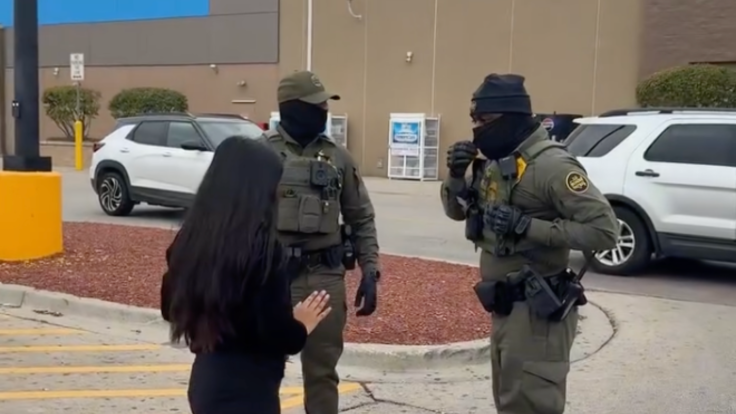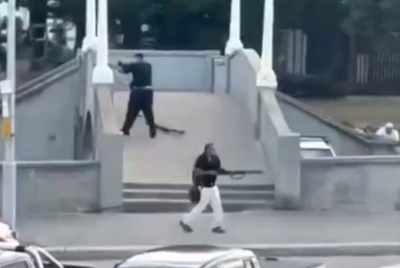Trump Admin Plans Major ICE Shake-Up Amid Failure to Reach 3,000 Daily Arrest Goal
The White House plans to replace underperforming ICE leaders with Border Patrol officials amid a push for higher arrest numbers.

The Trump administration has announced a significant shake-up within the US Immigration and Customs Enforcement (ICE), reflecting mounting frustration over the agency's failure to meet a White House target of 3,000 daily arrests. Multiple sources familiar with internal discussions reveal plans to reassign as many as a dozen field office directors, with potential replacements drawn from the US Border Patrol.
The proposed reorganisation would impact roughly half of ICE's 25 regional offices, marking a substantial shift in the agency's enforcement strategy. Several ICE officials have already been informed of impending changes to their assignments. While the Department of Homeland Security (DHS) has declined to confirm staffing moves, it issued a public statement emphasising the administration's commitment to 'delivering results and removing violent criminal illegal aliens,' without providing specific details.
The Performance Gap
At the centre of the controversy lies a stark discrepancy between administration expectations and ICE's actual performance. Earlier this year, senior aides pressed ICE to execute at least 3,000 arrests per day as a baseline for its operations. However, internal data obtained by news outlets shows the agency's arrest averages remain well below that target. In September, ICE's daily arrest count hovered around 1,178 — less than half of the administration's goal.
Some within the administration believe that officials from the Border Patrol, known for their more aggressive operational stance, may be better suited to spearhead the enforcement drive. Discussions are underway about importing Border Patrol command structures into ICE's internal hierarchy to bolster effectiveness.
A More Assertive Enforcement Agenda
These leadership changes are part of a broader shift in immigration policy, transforming enforcement from occasional interventions into a high-volume, daily operation. Traditionally, ICE has balanced enforcement with discretion and legal constraints. The current approach, however, is explicitly target-driven and managerial.
Since President Trump took office in January, the administration has aimed to unify DHS components into a concerted effort to deport immigrants with criminal convictions or final removal orders. To expand capacity, ICE has increasingly relied on Border Patrol agents to support interior arrests, even well inland from the US border.
Domestic enforcement operations, once limited to carefully vetted cases, now encompass arrests at courthouses, transit hubs, workplaces, parking lots, and other public spaces. Critics argue this approach erodes due process, circumvents judicial reviews, and undermines longstanding norms around 'sensitive locations' such as schools and hospitals.
Enforcement in Chicago Sparks Controversy
The tensions between national enforcement ambitions and local realities have been starkly evident in Chicago. Recent operations have sparked significant controversy.
In September, ICE and DHS launched 'Midway Blitz', deploying hundreds of agents in a concentrated sweep across the Chicago metropolitan area. Nearly 550 individuals were arrested during the operation. While DHS publicly acknowledged the scale of the crackdown, local officials expressed outrage over the lack of coordination with city authorities.
Among those caught in the raids were individuals without serious criminal records, including two staffers of a local alderman who are US citizens. Reports also emerged of ICE agents drawing guns on a state representative and staff members during a confrontation on Chicago's North Side. Videos circulated online showing agents rappelling from helicopters into buildings, firing pepper balls at protesters, and zip-tying children's hands.
Legal challenges quickly followed. A federal judge ruled that at least 22 warrantless arrests in Chicago violated a 2022 court agreement that limits ICE's authority in certain Midwestern states. The injunction requires ICE to regularly disclose warrantless arrests, but advocates say enforcement continues in defiance of these orders.
Community Impact and Rising Tensions
The enforcement operations have had profound effects on local communities. Immigrant rights groups report a surge in calls to legal hotlines, frantic efforts by families to locate detained relatives, and increased trauma in neighbourhoods where agents have deployed militarised tactics. Some residents now blow whistles to warn neighbours when ICE agents are nearby, while legal clinics scramble to file emergency petitions to secure the release of detainees.
The Chicago operations exemplify the broader tensions surrounding the administration's aggressive immigration policies. While the White House aims to boost deportations and assert greater control over immigration enforcement, local communities continue to grapple with the human toll of these raids.
© Copyright IBTimes 2025. All rights reserved.





















